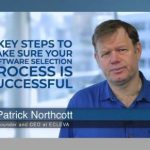The Power of Observation in Requirements Gathering

Understanding your audience is the cornerstone of designing impactful solutions. Without truly knowing how users think, feel, and behave, it’s nearly impossible to create products or services that resonate with them. While traditional research methods like surveys, focus groups, and interviews are valuable, they often rely on users recalling past experiences—leaving out critical details. Observing users in real-time as they complete tasks in their natural environments can provide richer insights and lead to better solution designs.
In this blog, we’ll explore the importance of observation in requirements gathering, its role in Human-Centered Design (HCD), and how it can uncover key insights for solving user pain points effectively.
What is Human Centred Design?
Human-Centered Design (HCD) is an empathy-driven approach to solution design that prioritizes understanding user needs. It involves four key stages:
- Learning and Empathizing: Deeply understanding your audience’s behaviors and challenges.
- Identifying Pain Points: Pinpointing specific problems that need solutions.
- Ideating Solutions: Brainstorming innovative ways to address these challenges.
- Creating and Testing Prototypes: Developing prototypes or Minimum Viable Products (MVPs) and refining them based on user feedback.
This methodology is widely used by successful companies like Apple, Spotify, Uber, and Airbnb. These organizations excel by embedding empathy into their design processes, particularly during the Empathize and Define phases of requirements gathering.
The Role of Observation in Requirements Gathering
At its core, requirements gathering involves understanding what users need and identifying their pain points. While workshops and interviews are common tools for this phase, they often fall short in capturing the full picture—especially when it comes to user experience (UX) elements. Users may articulate functional needs but struggle to express what makes a solution intuitive or enjoyable to use.
Why Observation Matters
Observation allows researchers to:
- See how users complete tasks.
- Understand where tasks are performed.
- Identify which devices or tools are used.
By observing users in real-world contexts, you can uncover unspoken challenges and moments that matter most—insights that traditional methods might miss.
Case Study: Improving Shopping Center Experiences
A real-world example illustrates the power of observation in uncovering hidden pain points. Researchers aimed to improve shopping center experiences for young mothers—a high-value customer group but one often dissatisfied with their visits.
Initial Research Methods
The team initially relied on focus groups and surveys. While these methods identified parking difficulties as a significant issue, the proposed solutions (e.g., pre-booking parking spaces) failed during testing due to budget-conscious behavior among young mothers.
Adopting Observational Research
The team shifted their approach to observing young mothers during actual shopping trips. This revealed a range of previously unarticulated pain points:
- Narrow parking bays made it difficult to unload prams without damaging neighboring cars.
- Parking spaces were often far from entrances, requiring mothers to push heavy prams across multiple levels.
- Navigating busy car parks while avoiding moving vehicles added stress before even entering the shopping center.
Redefining the Problem Statement
With these insights, the team redefined the problem and implemented targeted solutions:
- Wider parking bays for easier pram unloading.
- Dedicated “Parents with Prams” spaces near entrances.
- Park assist systems to guide shoppers to available spots
- Enhanced safety measures like pedestrian crossings.
These changes not only addressed young mothers’ frustrations but also benefited all shoppers by improving overall parking experiences.

Key Takeaways for Effective Requirements Gathering
To design solutions that truly resonate with users:
- Combine Workshops with Observations: Use workshops to gather initial insights but supplement them with real-time observations for deeper understanding.
- Focus on Moments That Matter: Identify critical touchpoints where users experience the most friction or frustration.
- Empathize with Context: Observe not just what users do but how, where, and why they do it.
- Iterate Continuously: Use observational data to refine problem statements and develop more effective solutions.
Conclusion
Observation is a powerful yet underutilized tool in requirements gathering. By watching users interact with systems or complete tasks in real-world settings, businesses can uncover richer insights that lead to better-designed solutions. This approach ensures not only functional success but also enhanced user satisfaction—turning pain points into moments of delight.
If you’re looking to elevate your requirements gathering process or need expert guidance on implementing Human-Centered Design practices, reach out to ECLEVA today!



